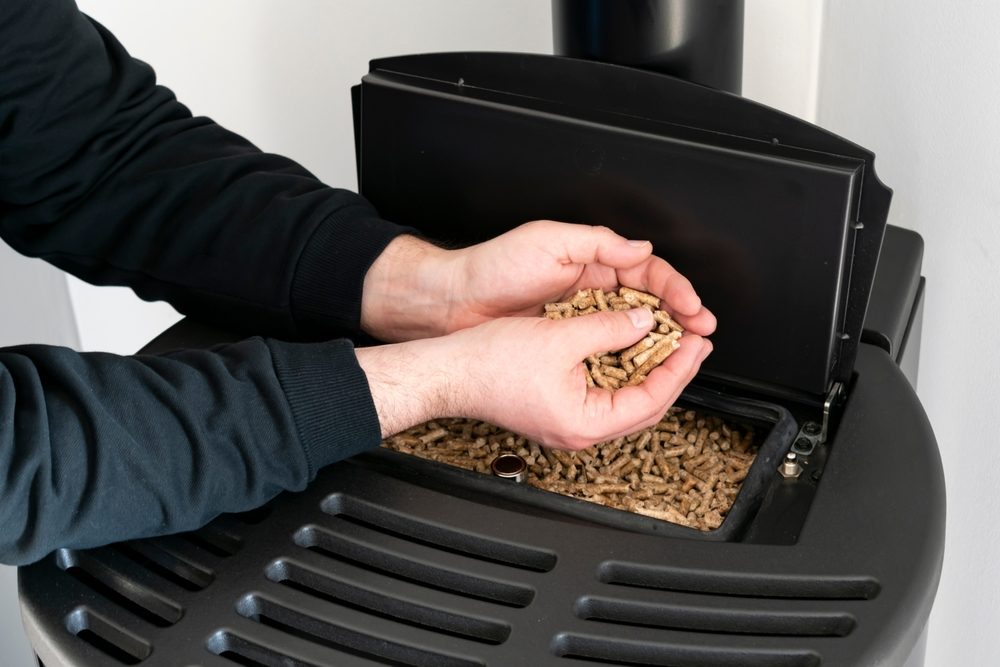The arrival of winter temperatures reminds us of the importance of optimal use of our pellet stove. While this modern heating device is attractive due to its performance and economical aspect, certain usage habits can prove counterproductive.
A particularly common practice is to run the stove continuously at a minimal speed, believing that this will save money. However, this approach poses a significant risk to your system.
The Unknown Dangers of Minimal Speed for Your Appliance
The Gradual Formation of Harmful Deposits
Operating a pellet stove at low power leads to incomplete combustion of the fuel. The temperature achieved is insufficient to ensure a complete transformation of the pellets into heat.
This inadequate combustion generates an excessive amount of residue that gradually coats the internal walls of the device.
Unburned particles accumulate over time in all corners of the stove, forming an increasingly thick layer. This phenomenon particularly affects the combustion chamber, the burn pot, and the flue gas ducts.
The Decrease in Thermal Performance
The gradual accumulation of deposits results in a significant decrease in thermal efficiency. The deposits act as an insulative barrier that hampers the proper distribution of heat throughout your home. To maintain the desired temperature, the appliance must then consume more pellets.
This overconsumption directly translates into an increase in heating costs. A vicious circle ensues: the more the stove gets clogged, the more it consumes, and the more it clogs again.
Accelerated Aging of the Equipment
The continuous buildup of residues causes premature wear of your stove’s components. Mechanical parts endure increased pressure, and electronic systems can be impacted by the excessive presence of particles.
This accelerated degradation significantly reduces the lifespan of your installation, potentially halving its normal lifespan. Repairs become more frequent and costly.
Practical Solutions to Combat Excessive Build-up
The Importance of Alternating Heating Regimes
To preserve your appliance, adopt a dynamic management of heating power. Alternate between different speeds based on your actual needs. This variation allows for better combustion of the pellets and limits the formation of deposits.
Schedule heating cycles that suit your lifestyle, including periods of higher power to naturally “clean” your stove.
Regular Maintenance is Essential
Establish a rigorous maintenance schedule for your stove. Weekly cleaning of the burn pot and glass, combined with regular ash removal, helps maintain optimal performance.
Additionally, plan for an annual professional servicing to ensure the safety and longevity of your installation.
The Strategic Choice of Pellets
Opt for high-quality pellets that are certified and suitable for your stove model. Their optimized composition ensures cleaner combustion and generates fewer residues.
Investing in premium fuel quickly pays off by reducing build-up issues.
Identifying Symptoms of Critical Build-up
Several signs indicate a critical build-up in your stove: a weak or yellowish flame, a quickly blackening glass, difficulties starting, or an unexplained increase in pellet consumption.
In the face of these symptoms, prompt action is necessary to prevent more serious damage to the appliance.
Optimize Your Long-term Investment
A considered use of your stove ensures not only its proper functioning but also its profitability. Good usage practices can significantly reduce maintenance and repair costs.
By following these recommendations, you can fully enjoy the benefits of your pellet stove while preserving your initial investment.
And you, how do you manage the power of your pellet stove? Share your experience in the comments! Have you encountered build-up issues? Perhaps you have developed a unique method to optimize its operation? Your feedback can help other users make the most of their devices and avoid the pitfalls of minimal speed.

